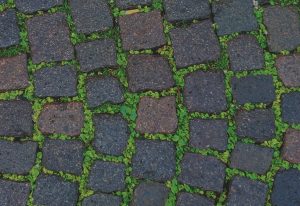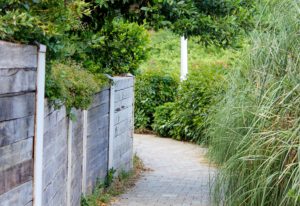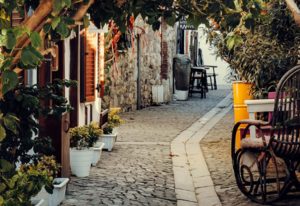
Floors permeabilization: a challenge of sustainable design
Get to know a trend in terms of urban and landscape design, in the article “Floors permeabilization: a challenge of sustainable design”, by Ana Marianela Rochas-Porraz.
Natural soils are home to an important biodiversity, regulate temperature and allow the groundwater table to be recharged, which is part of the water cycle. However, in urban or strongly anthropized areas, soils have been intervened and become impermeable, which interrupts the previously described processes.
In many cities, floods, heat islands, and droughts are problems that have increased as part of climate change. That is why the current trend in terms of sustainable urban and landscape design is undoubtedly to permeabilize the floors.
“The current trend in terms of sustainable urban and landscape design is undoubtedly to permeabilize the floors.”

Brick pavement
Photography: Dids – Pexels
Una forma de realizarlo es simplemente removiendo los reves!imientos impermeables, como el asfalto y el concreto, y reemplazarlos por suelos vivos, arenas o gravas. Sin embargo, en el contexto de un proyecto, tenemos que tomar en cuenta los usos para poder encontrar un mejor equilibrio entre naturaleza y funcionalidad.
One way to do this is to simply remove impervious coverings, such as asphalt and concrete, and replace them with living soil, sand, or gravel. However, in the context of a project, we have to take into account the uses in order to find a better balance between nature and functionality.
Some alternatives to impermeable soils are stone or aggregate pavements, which are porous and, thanks to their separations, allow water infiltration. There are also prefabricated elements of the latticetype elements made of polymers in the form of a “honeycomb”, which can be built on carriages and allow the circulation of vehicles. This type of coating is recommended, for example, in parking lots.

Cobbled street
Photography: muhammed-zahid – Pexels
Another solution used especially in footpaths and pedestrian roads, are the aggregates treated with stabilizing products, which have less maintenance and stability than a simple dirt road. While it is not always possible to have “living” or natural soils in a large part of urban projects, introducing them in some areas and trying to reduce impervious outdoor areas, is of great help to increase the biodiversity of the site, fight against flooding and generate fresh and pleasant spaces.

Cobbled street
Photography: Pexels











